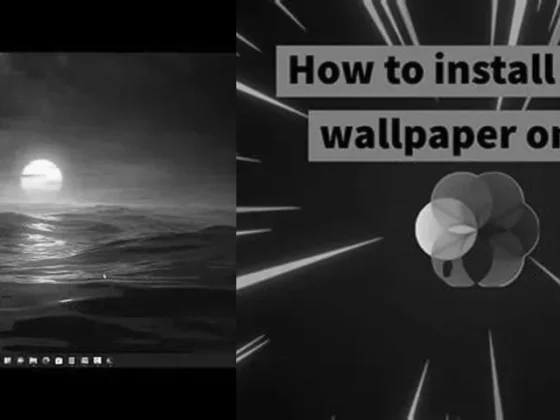How Do I Clean Junk Files From My Chromebook: Are you tired of your Chromebook running slow and sluggish? Do you find yourself constantly battling with junk files that are clogging up your storage space? Well, fret no more! In this step-by-step guide, we will show you how to clean those pesky junk files from your Chromebook and get it running like new again. Plus, we’ll share some additional tips and tricks to keep your Chromebook clean and optimized for optimal performance. So, grab your cleaning gloves and let’s dive into the world of decluttering your Chromebook!
Cleaning Junk Files from Your Chromebook: A Step-by-Step Guide
Chromebooks, known for their simplicity and cloud-based storage, can still accumulate unnecessary files over time. It’s essential to know how to keep your Chromebook running smoothly by removing these junk files.
Step 1: Navigate to Storage Management
To begin the cleaning process, access your Chromebook’s settings:
- Open the Settings menu by clicking on the time at the bottom-right corner of your screen and selecting the gear icon.
- Scroll down to Device and click on Storage Management.
- Here, you will find the option to Browse Data.
Step 2: Clear Cached Images and Files
Cached images and files can take up unnecessary space on your Chromebook:
- Within Storage Management, locate the Basic section.
- Check the box next to Cached images and files.
Step 3: Set the Time Range
It’s important to remove all accumulated cache, not just recent files:
- Set the Time range to All time to ensure you’re clearing out all cached data.
Step 4: Clear the Data
With your selections made, it’s time to clean:
- Simply click the Clear data button to remove the selected files.
Additional Ways to Keep Your Chromebook Clean
Managing Your Files and Downloads
Regularly review and remove unnecessary files:
- Delete files that are no longer needed.
- Consider moving important files to Google Drive to free up local storage.
Clear Browsing Data and Download History
Cleaning your browsing data can also help:
- Open Chrome, click the three dots at the top right for more options, and select Clear browsing data.
- Choose the types of information you want to remove, such as cookies, cached images, and history.
- Click Clear data to complete the process.
Uninstall Unused Apps
Apps that you no longer use can be uninstalled to clear up space:
Tip: Consider whether you’ve used an app in the past month. If not, it might be time to say goodbye.
Removing Extra User Accounts
Extra user accounts can clutter your Chromebook with additional data:
- Review the accounts on your Chromebook and remove any that are no longer needed.
Decluttering Your Chromebook for Optimal Performance
Free Up Storage Space
Consistently check your storage space and keep it clear of unnecessary files. This will ensure your Chromebook continues to perform well.
Shred Files You No Longer Need
To permanently delete files:
- Click the apps list button in your Chromebook’s shelf.
- Select the apps icon to open your applications.
- Navigate to Drive or your Memory Card in the Files app.
- Select the files or folders you wish to delete.
- Click the Trash Can icon or press Alt + Backspace to remove them.
Preparing Your Chromebook for Recycling
Performing a Factory Reset
Before recycling your device, protect your personal information with a factory reset:
- Open your Chromebook’s Settings.
- Click on Advanced and find the Reset Settings.
- Choose to Powerwash your Chromebook, which will return it to its original state.
Clearing Your Data
Ensure that all personal data is removed:
- After performing a Powerwash, double-check that all accounts and files have been removed.
- Consult your manufacturer’s instructions for additional data removal steps if necessary.
Regular Maintenance for Long-Term Performance
Delete Old Files
Old files can accumulate without you noticing. Here’s how to remove them:
- Click on the Launcher in the corner of your screen.
- Open the Files app.
- Select the file or folder you want to delete and click on Trash.
Clear Chromebook Cache and History
Keeping your browsing data minimal can contribute to a faster Chromebook:
- Open Chrome and click on the three dots for more options.
- Select Clear browsing data and choose a time range.
- Select the types of information to clear and click Clear data.
Conclusion
Keeping your Chromebook free of junk files is essential for maintaining its speed and performance. By following the steps outlined in this post, you can ensure that your device stays clean and clutter-free. Remember to perform these tasks regularly to keep your Chromebook in top condition. When the time comes to part with your device, make sure to do a factory reset to protect your personal information before recycling it.
With these tips and a bit of regular maintenance, your Chromebook will continue to serve you well, free of unnecessary digital clutter.
FAQ & Related Questions about Cleaning Junk Files from Chromebook
Q: How do I clean junk files from my Chromebook?
A: To clean junk files from your Chromebook, go to Settings > Device > Storage Management, select Browse Data, check Cached images and files in the Basic section, set the Time range to All time, and click the Clear data button.
Q: How do I delete old files on my Chromebook?
A: To delete old files on your Chromebook, select the Launcher in the corner of your screen, open Files, select the file or folder you want to delete, and select Trash.
Q: How do I clear my Chromebook cache and history?
A: To clear your Chromebook cache and history, open Chrome on your computer, click More at the top right, select Clear browsing data, choose a time range, select the types of information you want to remove, and click Clear data.
Q: How do you shred files on a Chromebook?
A: To delete files on a Chromebook, click the apps list button, select the apps icon, open the Drive or Memory Card in the Files app, click to select files and folders to delete, and click the Trash Can. Alternatively, you can use the Alt + Backspace shortcut.
Q: How do I prepare my Chromebook for recycling?
A: Before recycling your Chromebook, perform a factory reset and clear your data to protect your personal information. Check with your manufacturer for data removal instructions.


